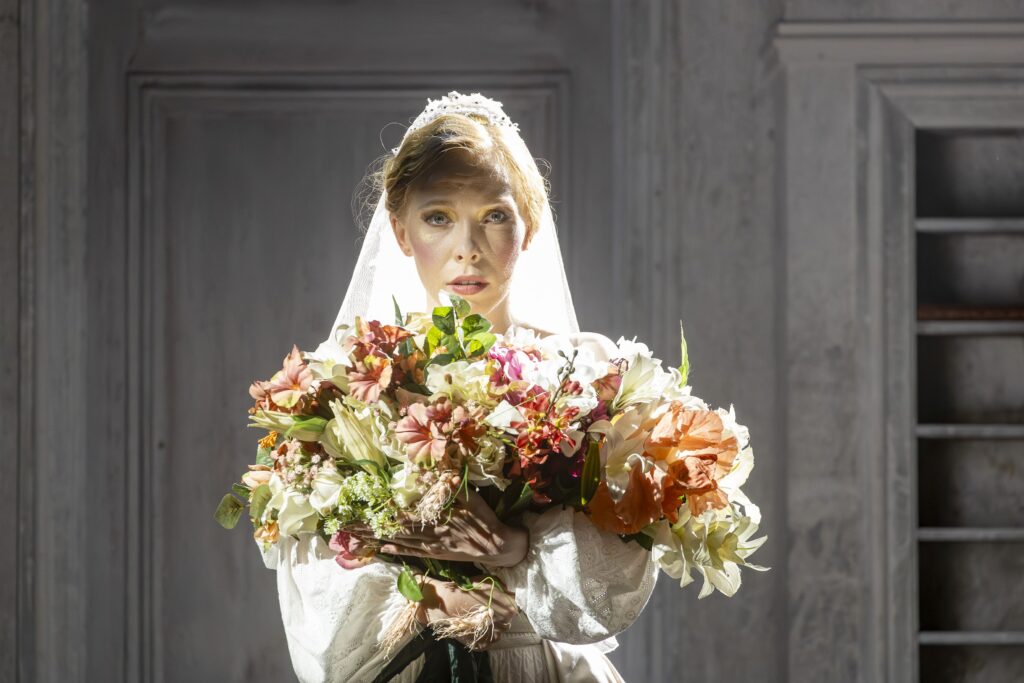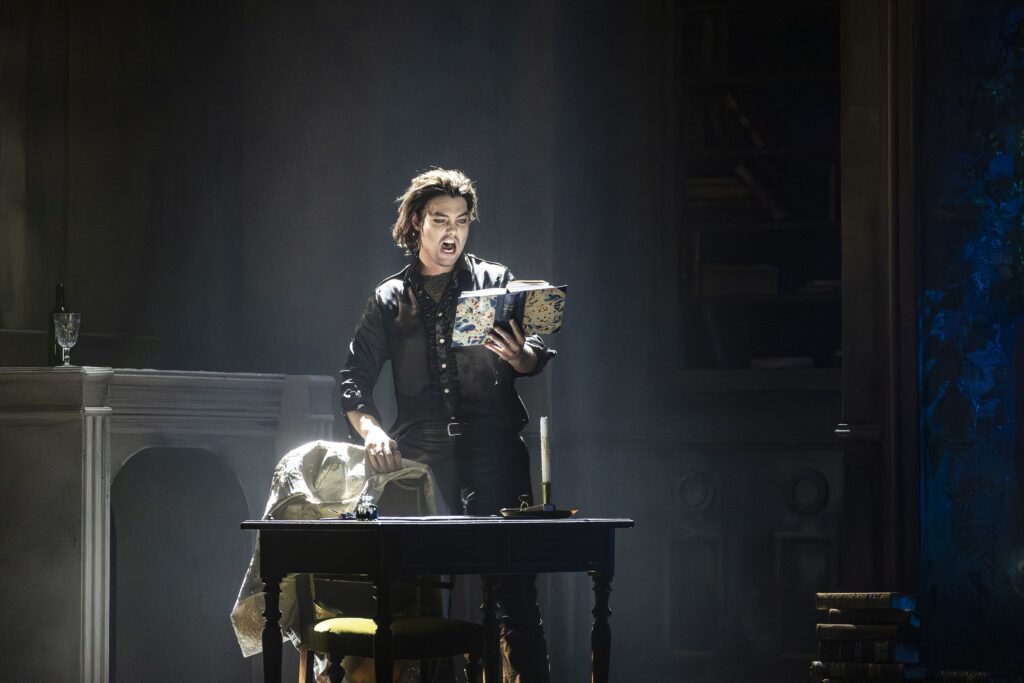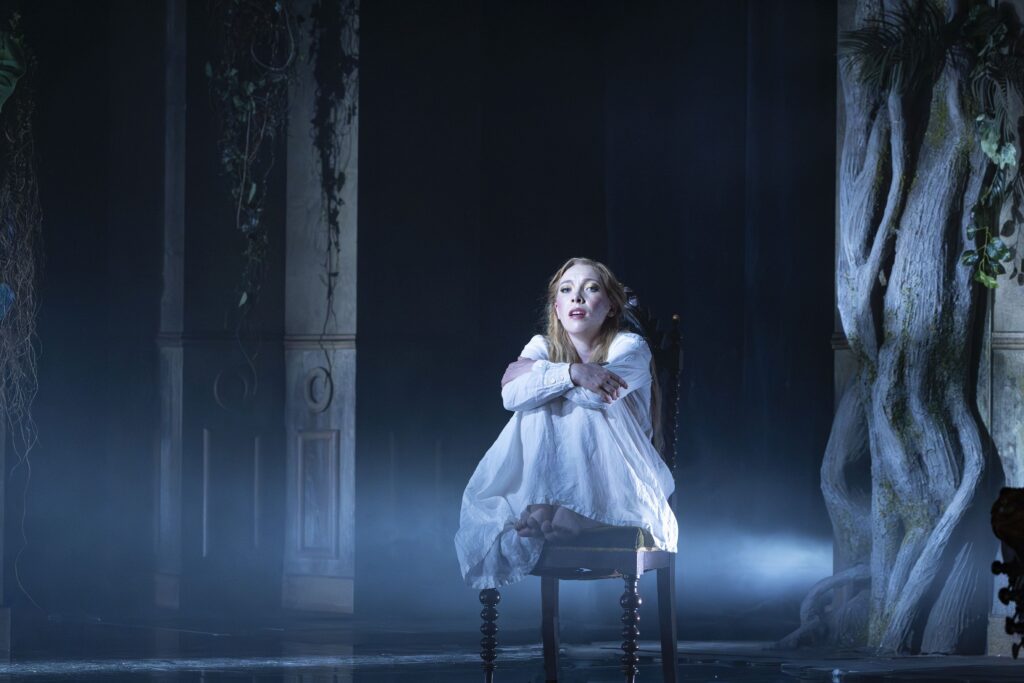
Den Jyske Opera took on “Ravnen” (The Raven), which premiered at the Royal Theatre in Copenhagen in 1832, on 13 October 2023 under its outgoing opera director Philipp Kochheim, who has dedicated himself to rediscovering and performing rarities for years. The young Andersen had already tried to gain a foothold as an opera librettist. At the end of his oeuvre there are nine opera texts, six of which saw the light of day. In 1846, “Ravnen” was revised once again, but was not well received by the public.
The opera “Liden Kirsten (little Kirsten)” by the duo Hartmann/Andersen, which premiered in the same year, was much better received by the public. In the version of “Ravnen” now on show, revised by Kochheim himself with added and altered texts and musical passages from Hartmann’s ballet music “Valkyrien (the Valkyries)” and “Thrymsqviden”, it became clear why a rarity can no longer be found on the repertoire of opera houses over the years: On the one hand, the mysterious fairytale-like story about a prince Jennaro (Anders Kampmann very convincing with a beautifully flowing tenor) who – after shooting a raven – is cursed by a mysterious monk to be in pain until he is redeemed by an unconditionally loving woman, is characterised by some stereotypical characters. On the other hand, there is a lot of music, between which there is a lot of talking and less singing.

Odense is a fine Danish city, an enchanted gem with many winding alleyways in its old town and plenty of things to do on the island of Funen, which lies halfway between Jutland and Copenhagen. Odense is Denmark’s third-largest city, with a special flair between university town, studios, a large local brewery and museums, where cycling and public transport are very important.
A little-known fact is that the city’s most famous son is Hans Christian Andersen. A boomtown at the beginning of industrialisation, the working-class district where the great Danish fairy-tale writer was born in 1805 as the child of a poor shoemaker grew up near the harbour, which was not directly on the Baltic Sea but connected to the sea by a canal, and the railway line. It is even less well known that the young Andersen went to Copenhagen after the death of his father to become an actor, singer and artist at the theatre.
The Dane, who was already famous and celebrated during his lifetime, did not want to be reduced to his fairy tales alone – his work is characterised by its sheer inexhaustible versatility and wealth of ideas. In the Andersen Museum, designed in 2021 by Japanese architect Kengo Kuma on the site of his birthplace in Odense, you can get a vivid picture of his life with the latest technology and on many square metres. H.C. Andersen’s love of music also becomes clear on a tour of the museum, as he also wrote opera libretti, including for the Danish composer Johann Peter Emilius Hartmann.
In Rifail Ajdarpasic‘s set design, director Kochheim therefore decided to focus on the main role of Armilla, who, like Senta from the “Flying Dutchman” in Claus Guth’s Bayreuth production, dreams of a saviour from the prison of her middle-class, bourgeois father. Sibylle Glosted played and sang this role with intensity and expressiveness. Her projection into the prince’s fairy-tale realm was achieved comprehensibly via her doll, which in her visions as a living embodiment (danced by Keiko Moriyama) also helps to overcome the shackles of her walking disability.

And so they both dance to the profound music of Hartmann, who provided the most interesting part of this new excavation with Italienità and some melancholic Nordic touches. At the podium of the Odense Symphony Orchestra, Christopher Lichtenstein accompanied the colourful orchestration attentively and with many small gestures. Urgency and drama, melancholy and ecstasy were thus vividly and precisely presented in the packed Odense Concert Hall. Christian Oldenburg sang a convincing Prince Millo with some differentiated lyricism, which could only have been a little more expressive in the high notes.
Armilla’s father Norando was sung by Steffen Bruun with a carrying melody against a pale background. The three water nymphs (Eline Denice Risager, Estrid Molt Ipsen, Lina Valantiejute) rounded off the colourful fairytale world as a harmoniously singing trio. The choir was rehearsed by Christopher Lichtenstein and Peter Pade in an equally harmonious and joyful way. At the end, the audience applauded everyone involved.